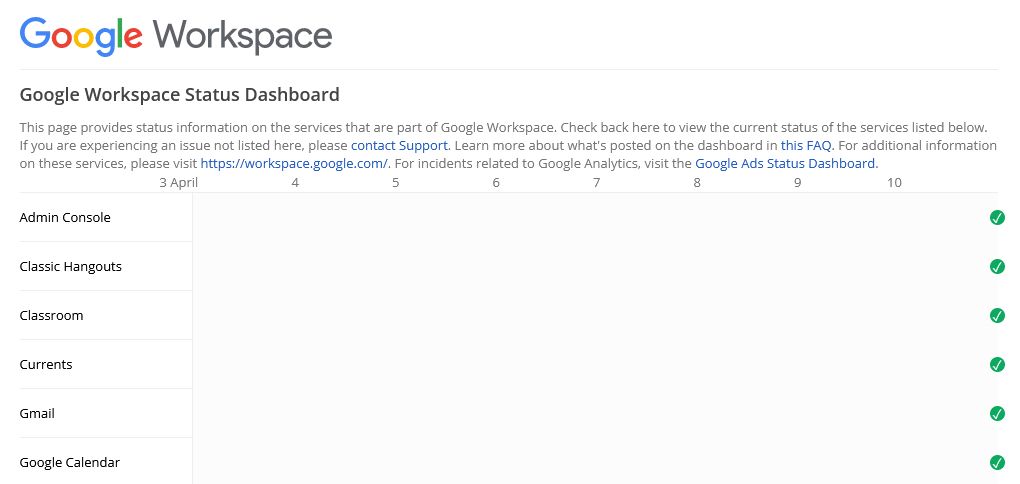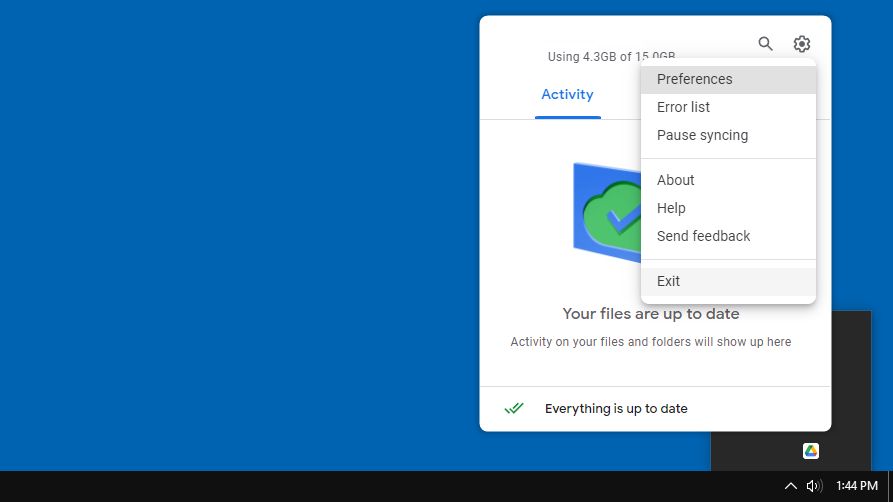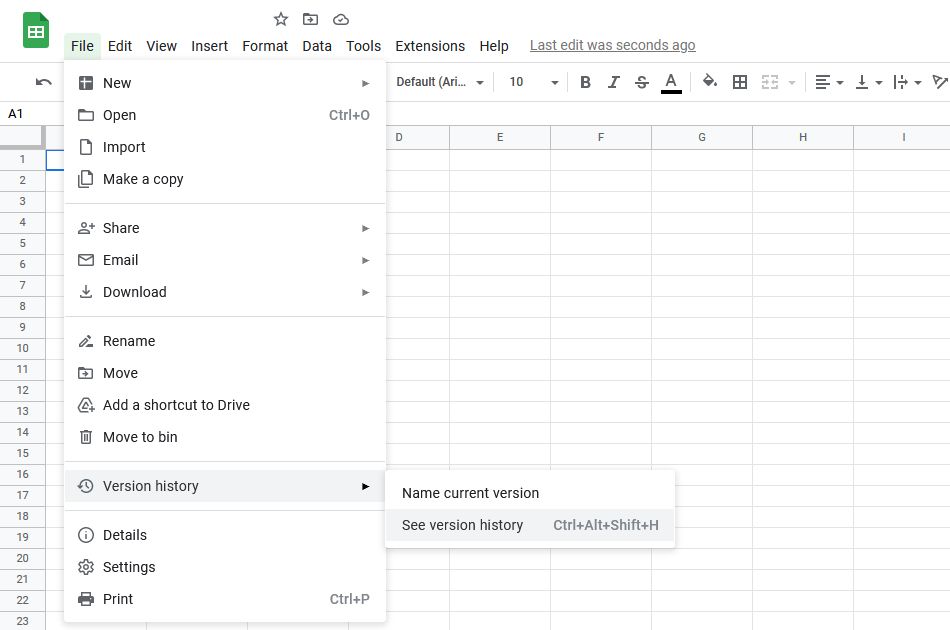Will Goggle Documents I Download to My Computer Continue to Be Updated
Quick Links
- General Google Drive Troubleshooting Steps
- How to Recover the Old Version of a Google Drive File
- How to Recover a Google Drive File That Has Disappeared
- Google Drive Has Run Out of Storage Space
- Unable to Print on Google Drive
- Can't View or Edit a Shared Google Drive File
- How to Use Google Drive Offline
- Can't Upload or Sync Files
- Do More With Google Drive
Google Drive allows you to collaborate with others seamlessly. It's also integrated with lots of other services, and files are always accessible. Best of all, you get an ample amount of storage for free.
Despite Google Drive's excellence, there can be problems in accessing the service. You may not be able to clear out storage space, share files, or are unable to access a document. Thankfully, many Google Drive issues are easy to fix.
We're going to offer some typical Google Drive troubleshooting tips, then solve some specific Google Drive problems.
General Google Drive Troubleshooting Steps
These are some simple steps that you should try first. They can help diagnose and fix a variety of problems with Google Drive.
1. Check Google Drive's Online Status

Visit Google's app status dashboard. This lists all of Google's services and tells you if there's a known problem with them. If you see a "service disruption" (amber) or "service outage" (red) indicator on the app you want to use, you can click on the colored dot to see details about when the service will be back online.
If the problem with Google Drive is on Google's end, the only thing you can do is wait for the outage to be over.
2. Disable Your Antivirus and Firewall
Antivirus and firewalls cause difficulties with syncing files, or a "You are offline, some functionality may be unavailable" error. As such, try temporarily disabling your antivirus and firewall—just remember to turn them back on later (there are plenty of reasons why you should use a firewall.)
On Windows 10 and Windows 11, disable Windows Defender with these steps:
- Press Windows key + I to open Settings.
- Go to Update & Security (Windows 10) or Privacy & security (Windows 11) > Windows Security > Open Windows Security.
- Once here, click Firewall & network protection.
- Select your active network and slide Microsoft Defender Firewall to Off.
3. Restart Google Drive
If you're using Google Drive via a web browser, log out, close your web browser, ensure your internet connection is reliable, and then log back in.

You can also quit Google Drive from your desktop. To do this:
- Click the Google Drive icon in your taskbar.
- Click the settings cog in the top-right.
- Select Exit.
- Reopen the app.
4. How to Recover the Old Version of a Google Drive File
Google Drive keeps a detailed edit history of any and all changes made on your document by any user who has editing permissions.

To go back to an earlier save of a file created within the Google ecosystem (like on Google Docs), open the file and go to File > Version history > See version history (or press Ctrl + Alt + Shift + H).
The history of changes made to the file will appear on the right-hand side of the document, and you can navigate through all the revisions made.
For non-Google files that you have uploaded, right-click the file, click Manage versions, and you can browse and download all prior versions of the file (up to 30 days or 100 versions).
5. How to Recover a Google Drive File That Has Disappeared
If you're the only one with access to the file:
Check your Google Drive trash folder, accessible via Trash on the left-hand navigation. If you see the file that you're looking for, right-click it and select Restore. Your file will now be available in its original location.
If your missing file isn't in your trash, the name may have changed, or it was accidentally moved to another file. Thankfully, Google Drive has advanced search features. Try searching for your file using keywords or dates, and see if it's in another location than the one you anticipated.
If multiple people are working on the file:
One of the most common mishaps with Google Drive is that it deletes the file for everyone if one person deletes a shared file. There are a number of factors to consider when using Google Drive to collaborate, but this is one of the most important. Just like with any other file storage system, it's imperative that you keep backups of your files in a separate, secure location.
The owner of the shared file may be able to retrieve it from their deleted files. Alternatively, if you have a Google Drive account through a school or workplace, there may be an administrator who can see all deleted files for 30 days after they have been deleted, and may be able to assist you in your case.
6. Google Drive Has Run Out of Storage Space
Google Drive's storage capacity is shared across services like Google Docs, Google Sheets and Gmail, and Google Photos. To see how much space you're using across all those Google services, visit the Google One storage page. If you run out of space, you have a couple of options.
Delete Data From Google Drive
The first is to clear out files you no longer need. On Google Drive, click Storage on the left-hand menu. This will show you all your files, which you can sort by Storage used.
To delete something, right-click it and select Remove. Remember to also remove it from the trash.

You should also check for any third-party apps that are using storage invisibly. To do this, click the cog icon in the top-right and click Settings > Manage apps.
For each app, click Options, and you can use Delete hidden app data if necessary. You can also click Disconnect from Drive to remove the app integration entirely.
Upgrade Your Google One Storage
Google Drive comes with 15 GB of storage space, which you can quickly exhaust if you're not careful. If you can't find anything to delete, consider paying to upgrade your storage capacity.
Check the Google One storage page for pricing, wherein you can pay a reasonable monthly or yearly cost for 100GB, 200GB, or 2TB of data.
7. Unable to Print on Google Drive
Printers and Google Drive sometimes don't play well together, but you have some options to try to troubleshoot the root of your problem:
- Ensure that your printer software is up-to-date. Because Google Drive updates constantly, it can quickly outpace your printer software. This can cause communication problems between the two services, and result in printing errors.
- Similarly, you'll want to make sure that the web browser you're using is up-to-date too.
- Disable any browser extensions that may be interfering with your ability to print.
- If you're still unable to print directly from Google Drive, it might be worth taking the time to download your file as a PDF and then print it from your PDF software instead of from your browser.
This issue often crops up because of the number of choices users have for sharing Google Drive files with others. The person sending you the link to the file may have missed a step in the process or chosen the incorrect option. Therefore, you may be unable to see the file at all or be able to see the file without the ability to make any changes.
If you don't have access to a file, Google Drive will provide you with a button to Request access from the file's owner, which will prompt them to change the sharing settings on the file.
If you're the owner of a file and people are having trouble accessing it, double-check that you've set the sharing parameters correctly using the video above.
9. How to Use Google Drive Offline
In order to use Google Drive offline, you will need to use either the Google Chrome browser or install the Google Drive app on your PC or Mac.
On Chrome:
Visit Google Drive settings, and check Create, open and edit your recent Google Docs, Sheets, and Slides files on this device while offline. You will need to download the Google Doc Offline plugin, which it will prompt you to do.
You can only do this with one account per computer, so enable it only on the account that you use most often. Also, to enable offline syncing, you will need to have an internet connection initially, so it involves some planning the first time.
On your computer:
Download Google Drive and follow the prompts to set up your account. You must be connected to the internet initially so that your files can sync to your computer.
10. Can't Upload or Sync Files
One of the main advantages of using Google Drive is that it syncs your files across all your devices. If that breaks, it's a big problem.
We've compiled a separate guide to solve upload errors in Google Drive, so check that out.
Do More With Google Drive
If the advice here hasn't solved your problem, visit the Google Drive help page for more information. There is also a Google Drive help community where you can ask others for support.
With Google Drive up and running, it's time to learn what else you can do with it. There are plenty of default settings you should adjust to make the experience even better.
Source: https://www.makeuseof.com/tag/solve-common-google-drive-problems-simple-solutions/
0 Response to "Will Goggle Documents I Download to My Computer Continue to Be Updated"
Post a Comment